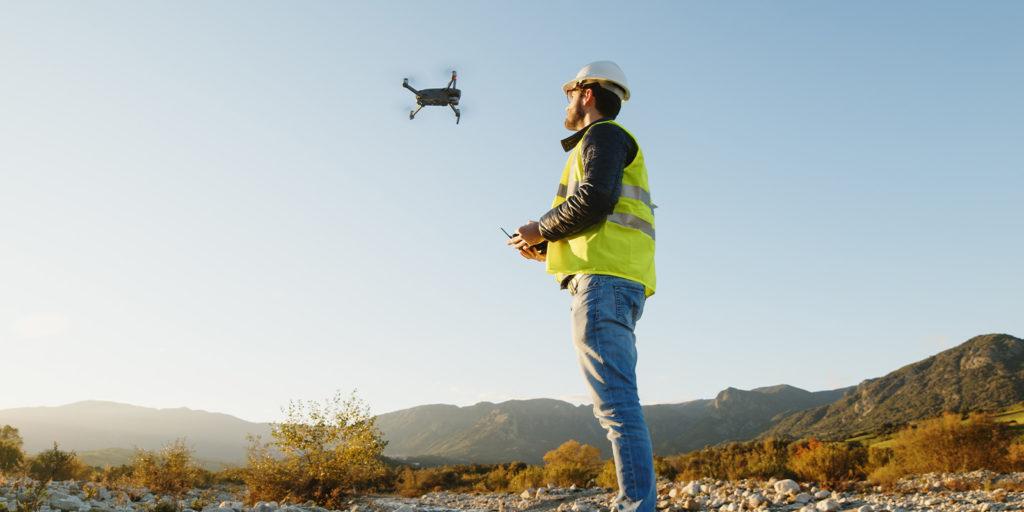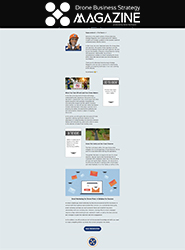
Embarking on a journey from being a drone photography hobbyist to a professional can be an exhilarating and rewarding experience. The captivating world of aerial imagery opens up a realm of creative possibilities and business opportunities. In this article, we explore the essential steps and valuable insights to help drone enthusiasts make a successful transition into the professional realm of drone photography. From honing your skills and acquiring the right equipment to building a strong portfolio and establishing a client base, we delve into the key strategies and practical advice that can guide you along this transformative path.
Whether you aspire to capture breathtaking landscapes, document events from captivating angles, or contribute to the filmmaking industry, this article serves as your comprehensive guide, equipping you with the knowledge and tools to confidently enter the dynamic world of professional drone photography.
1. Reaching the Target Audience
Drone photographers can employ a combination of online and offline marketing channels. Online strategies include utilizing social media platforms like Instagram, Facebook, and YouTube to showcase work, engage with potential clients, and build a following. Optimizing a professional website for search engines is essential for attracting organic traffic. Offline strategies may involve attending industry-specific trade shows, networking events, and reaching out to local businesses that could benefit from aerial photography services.
2. Building a Strong Online Presence
To establish a robust online presence, drone photographers should create a professional website that showcases their portfolio, services offered, and contact information. Optimizing the website for search engines enhances visibility. Social media platforms play a vital role in sharing drone photography work, engaging with followers, and participating in relevant communities and hashtags. Online portfolios on platforms such as Behance or 500px can also attract potential clients and showcase skills.
3. Essential Elements of a Drone Photography Portfolio
A compelling drone photography portfolio should feature high-quality, visually stunning aerial photographs or videos that highlight the photographer’s skills and expertise. Including a diverse range of shots from different locations and perspectives showcases versatility. Subjects like landscapes, architecture, events, or real estate can demonstrate the photographer’s ability to capture various genres. Additionally, providing relevant information about projects, including purpose, clients, and notable achievements, helps potential clients understand the context and value of the work.
4. Leveraging Social Media for Showcase and Engagement
Social media platforms provide an ideal avenue for drone photographers to showcase their work and engage with potential clients. Consistently posting the best work, using relevant hashtags for increased discoverability, and actively engaging with followers can create a loyal community. Sharing behind-the-scenes content, tips, and insights related to drone photography establishes the photographer as an expert in the field. Collaborating with influencers or complementary brands expands the reach and attracts potential clients.
5. Communicating Unique Value Propositions
To differentiate drone photography services from competitors, it is crucial to identify and highlight unique selling points and value propositions. These can include specialized expertise in a particular niche (e.g., real estate, weddings, or film production), advanced drone technology, the ability to capture challenging shots, or a distinctive artistic style. Effectively communicating these qualities through marketing materials, website content, and social media captions helps attract clients seeking specific expertise or a unique creative approach.
6. Utilizing Testimonials, Reviews, and Case Studies
Testimonials, reviews, and case studies play a vital role in building credibility and trust with potential clients. Requesting feedback and testimonials from past clients and featuring them prominently on websites and social media channels demonstrates the photographer’s reputation. Encouraging clients to leave reviews on platforms like Google My Business or specialized directories enhances credibility. Sharing case studies that showcase successful projects, including objectives, challenges, and outcomes, establishes expertise and reliability.
7. Effective Pricing Models and Strategies
Determining appropriate pricing models and strategies requires research and an understanding of market demand and value delivered. Options such as hourly rates, fixed project fees, or tailored packages accommodate different client preferences. Factors such as equipment costs, editing time, travel expenses, and project complexity should be considered. Offering tiered packages with varying levels of service or additional add-ons can cater to diverse client needs while ensuring profitability.
8. Establishing Partnerships and Collaborations
Drone photographers can expand their client base by establishing partnerships and collaborations with other industry professionals. To do this, drone photographers should proactively reach out to real estate agents, event planners, architects, or construction companies. Attending industry events, joining relevant associations or organizations, and networking with professionals in these fields can pave the way for fruitful collaborations. By offering value-added services such as aerial shots for real estate listings or promotional videos for events, drone photographers can showcase the benefits of working together. Building relationships based on trust and understanding can lead to referrals and an expanded client base.
9. Creative Marketing Tactics
Implementing creative marketing tactics can generate buzz and attract new clients for drone photographers. One effective strategy is offering limited-time promotions or discounts for specific services or target markets. This incentivizes potential clients to take action and seize the opportunity. Another tactic is organizing photo contests or challenges related to drone photography on social media platforms. These engage the audience, encourage participation, and create excitement around the photographer’s brand. Collaborating with local businesses or organizations for cross-promotion can also help expand reach and attract new clients.
10. Networking and Industry Events
Drone photographers can effectively network and participate in industry events, conferences, and trade shows to connect with potential clients and industry influencers. Researching and selecting relevant events in the industry is crucial. When attending these events, photographers should prepare professional marketing materials such as business cards, brochures, and portfolios to showcase their work and leave a lasting impression. Engaging in conversations with attendees, actively listening to their needs and challenges, and utilizing social media platforms to share updates and insights from the event can strengthen connections. Following up with potential clients or industry influencers after the event is essential for maintaining relationships and exploring collaboration opportunities.
The Takeaway
Transitioning from a hobbyist to a professional drone photographer requires dedication, skill development, and a strategic approach. As you embark on this exciting journey, remember that it is a continuous learning process. Invest time in mastering the art of aerial photography, stay updated with the latest drone technology, and consistently work on expanding your creative boundaries. Building a strong portfolio, establishing a professional online presence, and networking with industry professionals can significantly contribute to your success. Additionally, always prioritize safety and adhere to regulations to ensure responsible drone operations.
With passion, perseverance, and a commitment to growth, you can navigate the path from hobbyist to professional, unlocking the full potential of drone photography and creating a fulfilling and rewarding career in this dynamic field. So spread your wings, soar to new heights, and capture breathtaking moments that will leave a lasting impact on both yourself and those who experience your aerial artistry.
Be smart, safe, and forever fly!
If you have any questions, let us know! If you’d like to hire us, you can get more information here.
Written by: Tony Marino, MBA – FAA Certified Part 107 Commercial Drone Pilot and Chief Business Strategist at Aerial Northwest
Disclaimer: The information provided in this blog post is for general informational purposes only and should not be construed as legal advice.

DRONE BUSINESS STRATEGY MAGAZINE
A free digital publication made exclusively for all small business drone pilots to them help start-up, become profitable while sustaining a competitive advantage within the drone service industry sector they opt to serve.
“If you love to fly, we’d love to have you come aboard!”
We share your information with no one. Our Privacy Policy.









Leave a Reply
Your email is always safe with us.